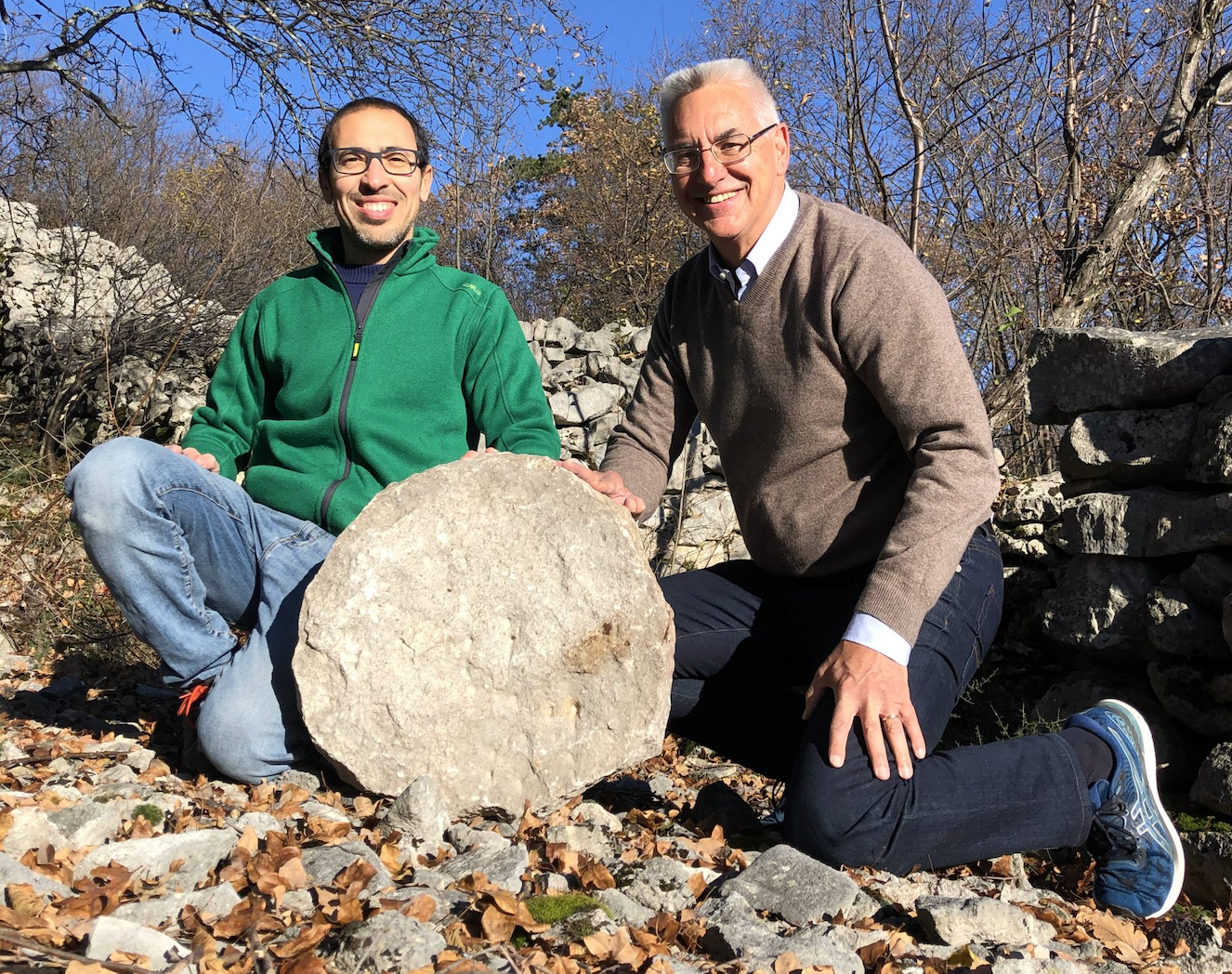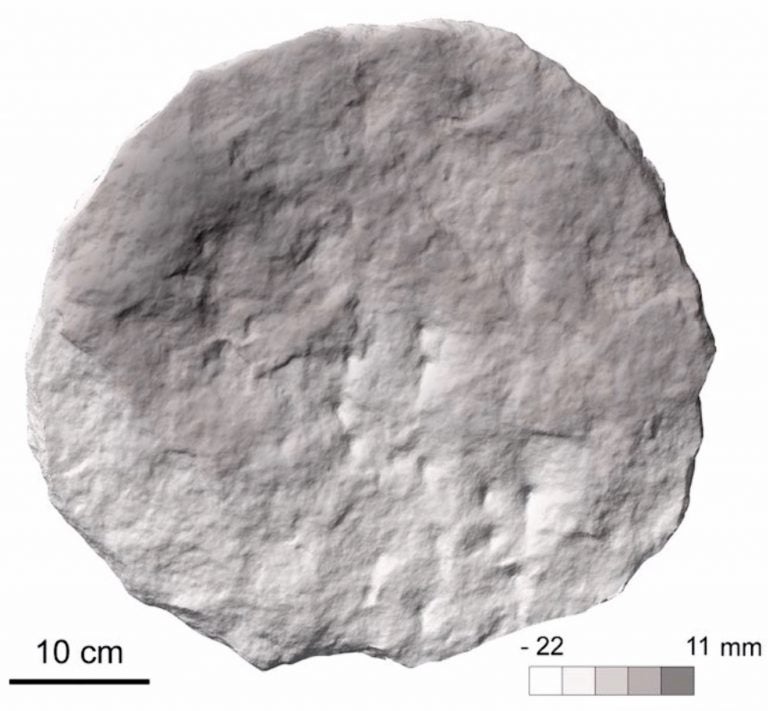Strange 3,000-year-old stone disk unearthed in Italy could be ancient map of stars
Disk may have been used to determine time for agriculture tasks, researchers say

A strange stone disk unearthed in Italy dating to about 3,000 ago could be an ancient map of the brightest stars in the night sky, a new study suggests.
The stone disk, about the size of a tire, was unearthed a few years ago near a hill fort in northeastern Italy and contains 29 mysterious chisel marks, researchers observed.
Twenty-four of the chisel marks are on one face of the stone, and five marks are on the other.
Using software to analyse the stone carvings, scientists found that the marks likely match groups of stars in the constellations of Orion, Scorpius, and Cassiopeia, as well as the cluster Pleiades.
Researchers also found another uncarved stone next to it about 50 cm (20 inches) in diameter and 30 cm (12 inches) thick, which they suspect could be a representation of the Sun.
One of the 29 marks remains to be identified, according to the study, published in the journal Astronomical Notes.
Scientists suspect the yet unidentified chisel mark likely represents a star in the Orion cluster that may have since exploded as a supernova, or could be a failed supernova that has left a black hole behind.

“The unidentified mark challenges the whole picture. We suggest it could have been the progenitor of a failed supernova,” they wrote.
Searching for a black hole in this part of the sky could verify this interpretation, researchers say.
“The case of a failed supernova is really intriguing as one of the techniques to search for them is precisely to look for missing stars in the current sky, by using images taken at previous times. This possibility offers a way to verify the proposed interpretation,” they added.
The disk, according to the study, may have been used by the people who lived about 3,000 years ago at the hill fort to track changing seasons as part of an agricultural calendar.

Pottery shards unearthed near the site indicate that the fort hill was in use from about 1800/1650 to 400 BCE, suggesting the stone disks can be safely referred only to this long timespan.
However, little is known about the ancient inhabitants of the Castelliere di Rupinpiccolo region where the stones were found.
Until now, the oldest known map of the night sky is a palimpsest attributed to Greek astronomer Hipparchus dated to about 135 BC.
The Nebra sky disk, a bronze artifact with gold appliqués indicating the Sun, the Moon, and the Pleiades dated around 1600 BC is even older, but is a more rudimentary representation.
If the stone disk is proven to contain a celestial map, it could predate the work of Hipparchus, and demonstrate “evidence of unexpected astronomical curiosity in protohistoric Europe.”
Join our commenting forum
Join thought-provoking conversations, follow other Independent readers and see their replies
Comments
Bookmark popover
Removed from bookmarks